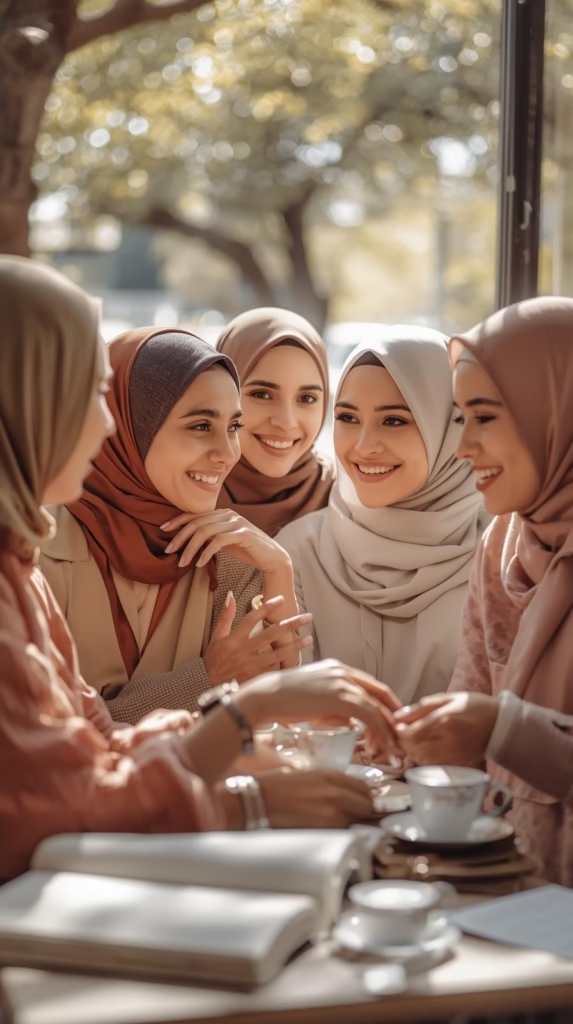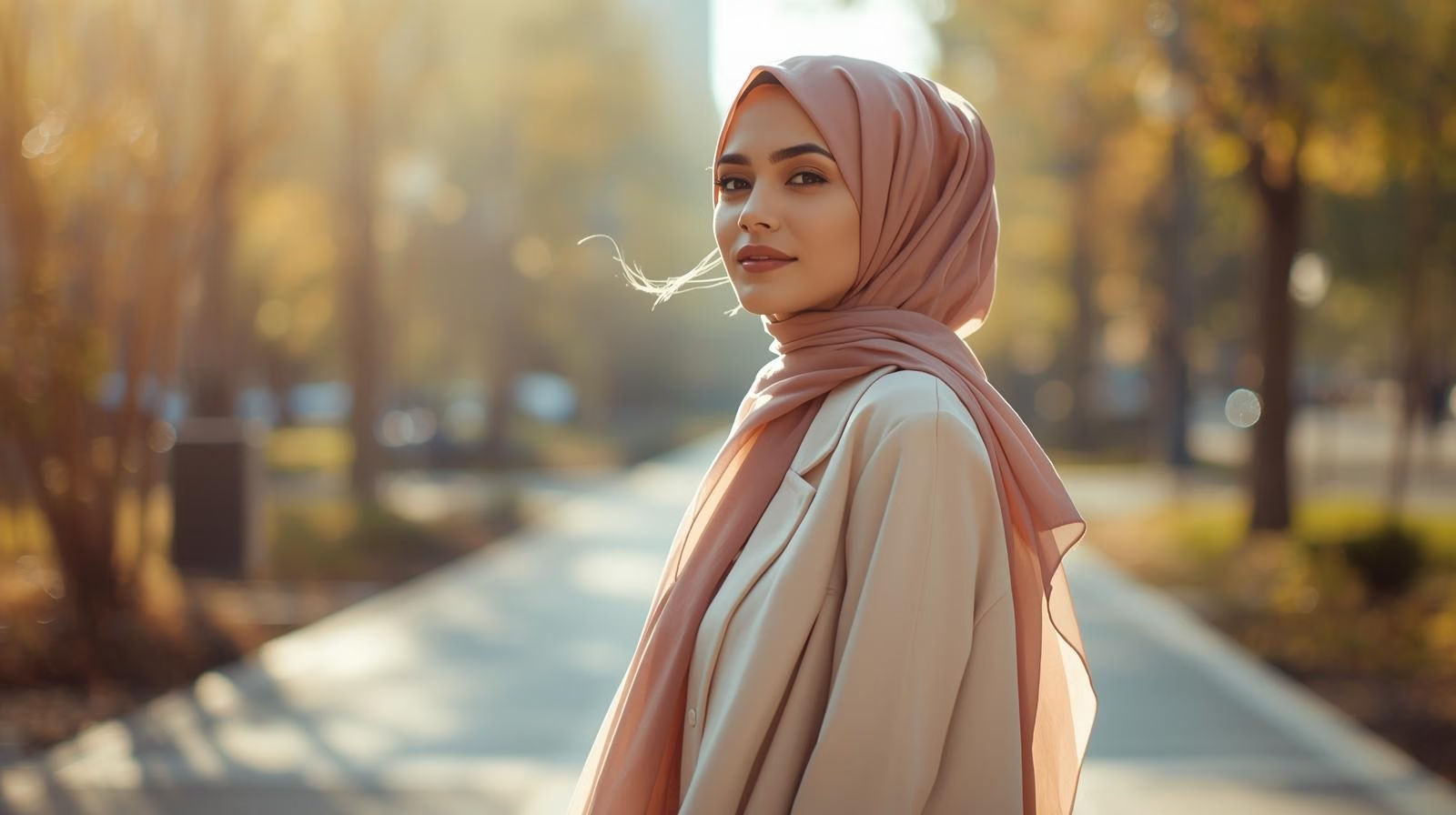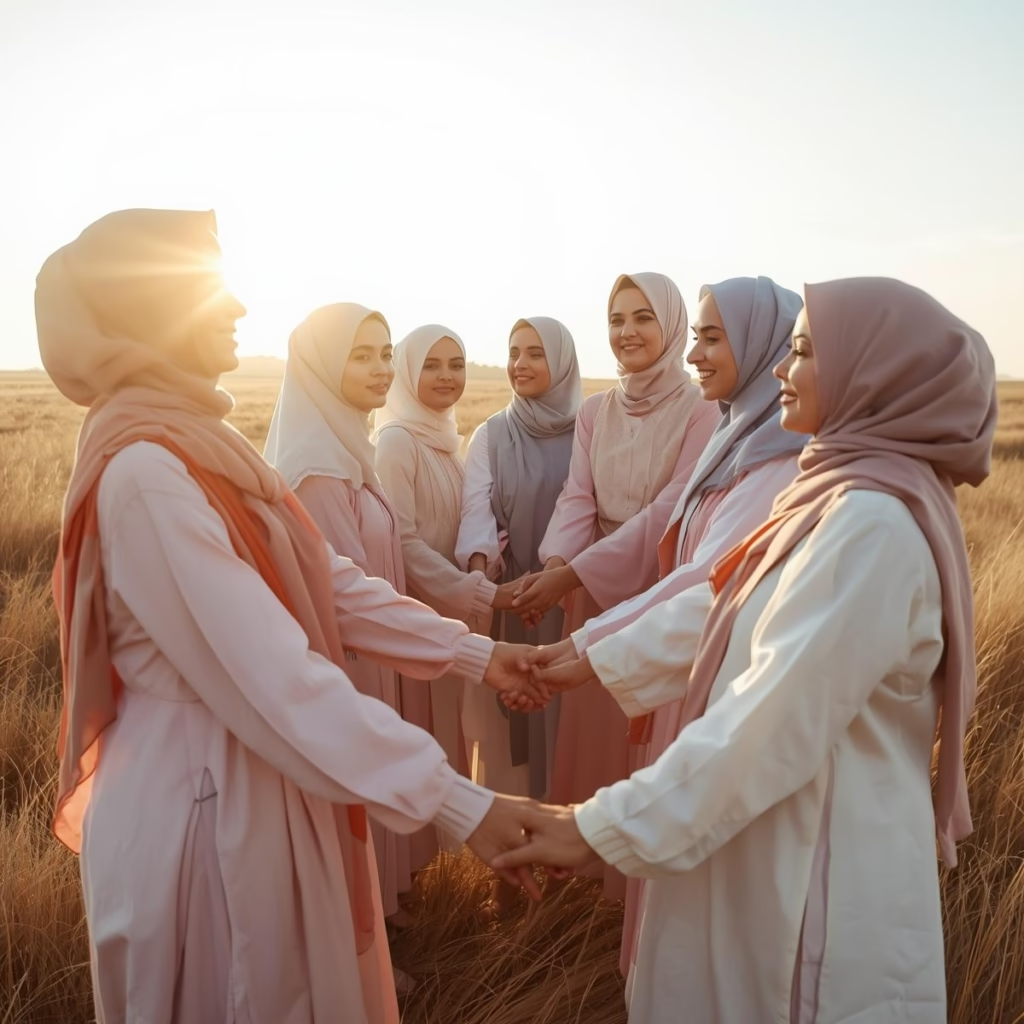Hijab is often seen as a symbol of modesty, identity and faith. Yet beyond being a personal choice of attire, the hijab carries a deeper role – one that connects individuals to their spiritual beliefs and strengthen bonds within the community. For many women, wearing hijab is not only about fashion, it is about living with purpose, dignity, and grace.
The hijab is first and foremost a reflection of personal faith. Choosing to wear it is a conscious act that reminds women of values such as modesty, humility, and respect. These principles extend beyond religion and shape interactions in everyday life. By wearing the hijab, women embrace a visible symbol of their beliefs, creating a daily opportunity to express faith and devotion. This outward expression of spirituality also inspires others and strengthens the bonds between women who share similar beliefs, reinforcing a sense of belonging and purpose.
The hijab is also a powerful marker of identity. Through modest fashion, women can combine tradition with personal style, choosing colors, fabrics, and accessories that reflect their individuality. From pastel hijabs for daily wear to luxurious fabrics for special occasions, the hijab allows women to express elegance without compromising their faith.
This integration of fashion and spirituality shows that modest fashion is not restrictive—it is empowering. It demonstrates that women can maintain their beliefs while confidently exploring style, creativity, and self-expression.

Building and Nurturing a Hijab Community
In essence, the hijab is not just a piece of clothing—it is a symbol of connection, unity, and social responsibility. By wearing it, women affirm their faith while actively contributing to a supportive, inspiring, and collaborative environment. The hijab community thrives on shared values, mutual encouragement, and the collective pursuit of both spiritual and social growth, creating a living testament to the power of solidarity.
Beyond individual expression, the hijab plays a pivotal role in fostering strong, meaningful community bonds. In public spaces, the hijab serves as a visible symbol of shared values, creating an immediate sense of recognition and solidarity among women who choose to wear it. This recognition is more than visual—it fosters trust, mutual respect, and a sense of belonging, forming the foundation of a thriving hijab community. In such communities, women are not only connected by faith but also empowered to support, mentor, and inspire one another in both personal and professional realms.
The hijab community is diverse and multifaceted. It extends beyond physical gatherings to online platforms, social media groups, and community projects where women exchange advice, share experiences, and provide encouragement. These connections help members navigate the challenges of modern life while maintaining their spiritual values. For many, the hijab becomes a bridge that links personal growth with collective empowerment, creating networks of support that transcend age, background, and geographical boundaries.
Breaking Stereotypes and Inspiring Respect
The hijab challenges common misconceptions. It is not merely a cultural obligation but a deliberate choice that reflects autonomy, dignity, and faith. By wearing a hijab, women educate others about the richness of hijab fashion and the diversity of religious expression, fostering empathy and respect across different communities. This visibility helps normalize modest fashion while promoting understanding, showing that the hijab is a symbol of strength, identity, and inspiration.
At Meyga, we see the hijab as the perfect intersection of faith and fashion. Thoughtful styling—through textures, colors, layering, and accessories—allows women to feel confident, elegant, and spiritually grounded. Modest fashion is not about limitation; it is about creativity, self-expression, and honoring personal beliefs. Women can embrace both contemporary trends and traditional values, demonstrating that fashion and faith can harmoniously coexist in everyday life.
Ultimately, the hijab is a living legacy, carrying stories of resilience, spirituality, and communal strength. It empowers women to mentor younger generations, nurture meaningful connections, and contribute to a values-driven society. Its role in building faith and community goes beyond individual choice—it becomes a shared journey of inspiration and belonging.
Contributing Positively to Society
The hijab encourages women to contribute beyond themselves. Across the globe, hijab communities are actively involved in charity work, educational initiatives, and cultural programs. From organizing modest fashion shows to fundraising for social causes, hijabi women demonstrate that faith and fashion can walk hand in hand with service and leadership.These initiatives not only strengthen the hijab lifestyle but also inspire respect and understanding from the wider society, challenging stereotypes and showing the hijab as a symbol of empowerment.
At its core, the hijab fosters unity through faith. A woman in a hijab is never truly alone—she is part of a greater community bound by shared values, experiences, and aspirations. Whether in daily encounters, online groups, or organized initiatives, the hijab community thrives on encouragement, inspiration, and mutual respect. This sense of unity proves that the hijab is not only about personal devotion but also about building a stronger, more connected society. It links spirituality with social responsibility, creating a legacy of empowerment and belonging.
The hijab is more than a modest fashion choice—it is a lifestyle, a faith-driven commitment, and a foundation for community. By nurturing the hijab community, women embrace their identity, inspire one another, and contribute positively to the world around them. At Meyga, we celebrate the hijab as both an expression of elegance and a powerful force that builds faith, connection, and sisterhood.


